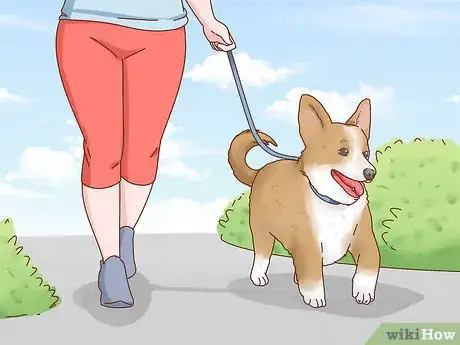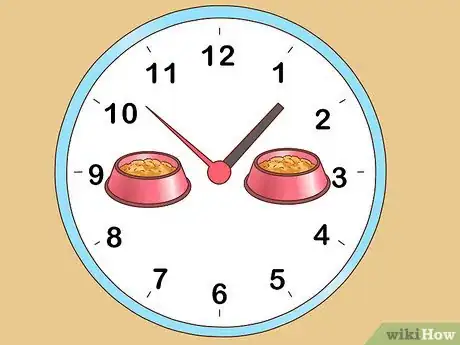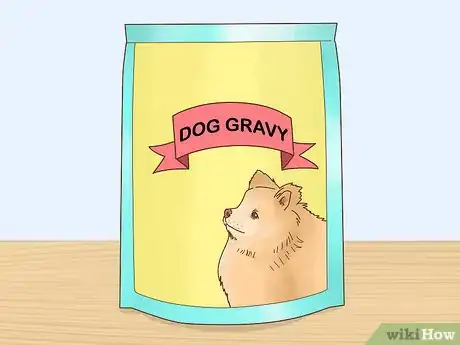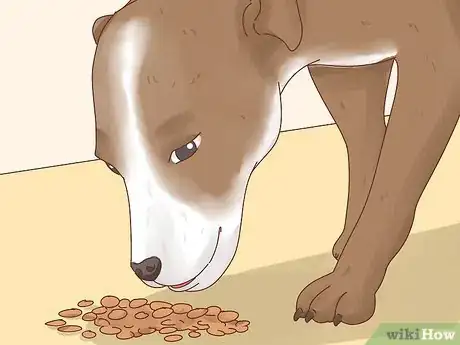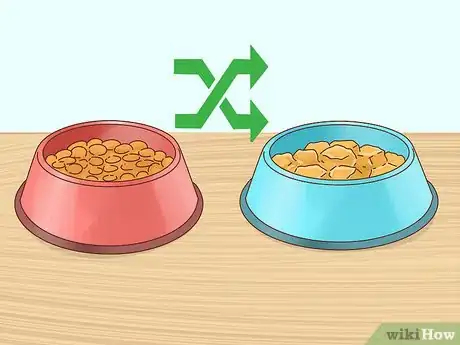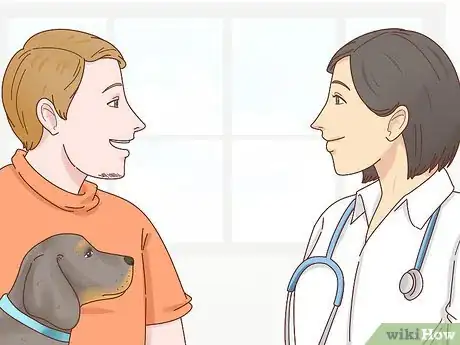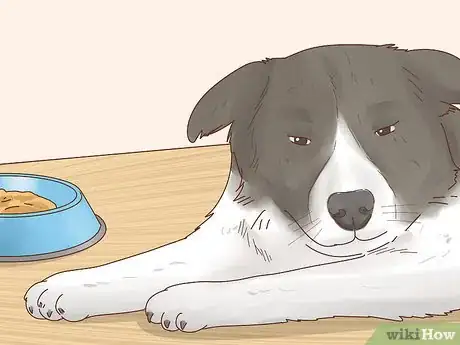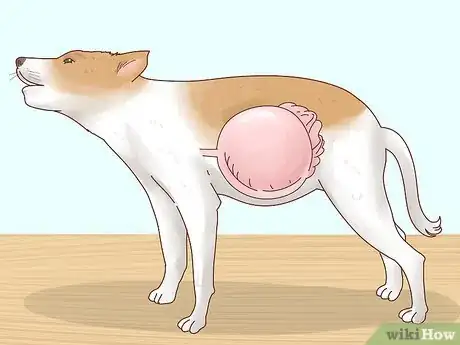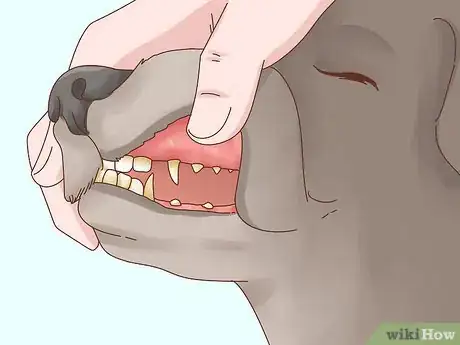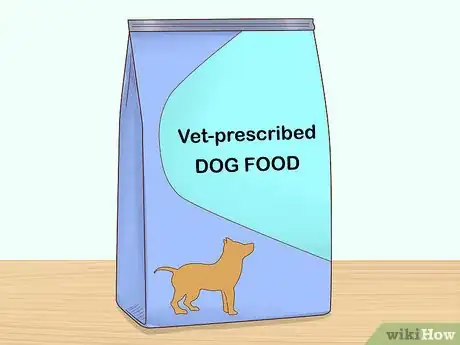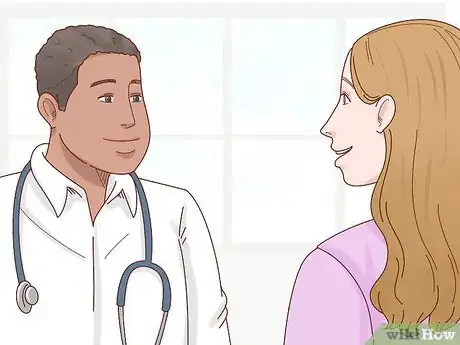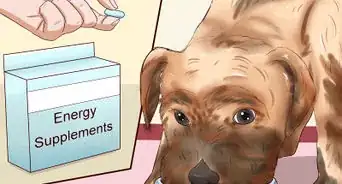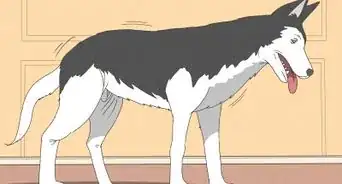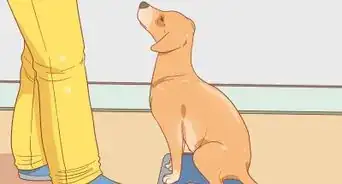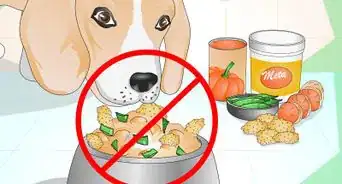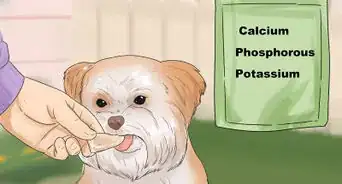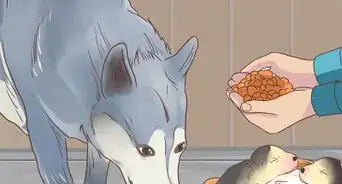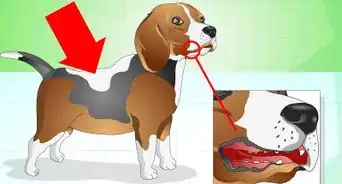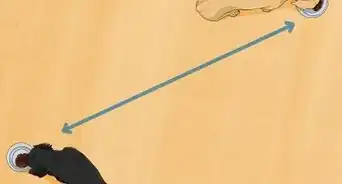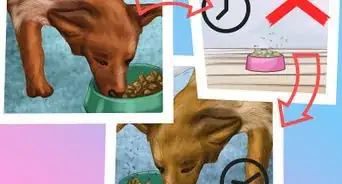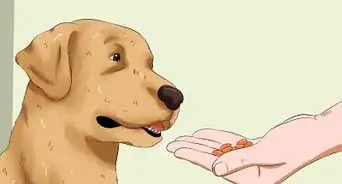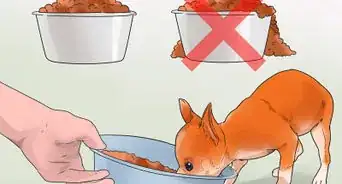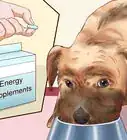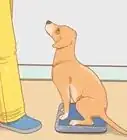This article was co-authored by Brian Bourquin, DVM. Brian Bourquin, better known as “Dr. B” to his clients, is a Veterinarian and the Owner of Boston Veterinary Clinic, a pet health care and veterinary clinic with three locations, South End/Bay Village, the Seaport, and Brookline, Massachusetts. Boston Veterinary Clinic specializes in primary veterinary care, including wellness and preventative care, sick and emergency care, soft-tissue surgery, dentistry. The clinic also provides specialty services in behavior, nutrition, and alternative pain management therapies using acupuncture, and therapeutic laser treatments. Boston Veterinary Clinic is an AAHA (American Animal Hospital Association) accredited hospital and Boston’s first Fear Free Certified Clinic. Brian has over 19 years of veterinary experience and earned his Doctor of Veterinary Medicine from Cornell University.
There are 7 references cited in this article, which can be found at the bottom of the page.
This article has been viewed 198,251 times.
Dogs won't always eat their kibble or wet dog food. This can be caused by stress, picky eating, or lack of exercise. Luckily, there are tricks to increase your dog's appetite and encourage eating. However, if your dog continues to refuse food or shows signs of fatigue or pain, contact a veterinarian immediately.
Steps
Increasing Appetite
-
1Look for the cause. There are many relatively minor reasons the dog might be eating less. These may clear up on their own, but you can still try to help them through it. If none of these issues fit your dog's situation, you may need to contact a vet or consider medical causes.[1]
- Some dogs get motion sick when traveling. Others have trouble eating in new surroundings following a move.
- Some dogs dislike being fed in an uncomfortable situation. Try to keep the dog's bowl in the same place, at a comfortable height, and away from other pets that try to eat the dog's food.
- Dogs may react to the departure or arrival of another pet or a family member.
- The cause may even be something small, like changing furniture or having house work done.
- Some dogs don't eat because they want attention from their owner. If the dog ignores its food and looks to you for attention, ignore it. When you feed the dog, put down its food for 10 minutes, ignore it, and throw away whatever doesn't get eaten.
- The dog may simply happen to be picky about the type of food he eats.
-
2Cut back on treats and table scraps. Most dogs would much rather eat that piece of steak and mashed potatoes than dog food. He'll love you for giving it to him, but over time it can make him a finicky eater and a beggar at the table.[2]
- Keep careful watch on your kids — they aren't always the best about cooperating with this rule.
Advertisement -
3Exercise the dog. Regular exercise will stimulate your dog's appetite and encourage him to eat more. To really boost the appetite-improving effects of exercise, take him for a walk before each meal. It won't take him long to associate the walk with mealtime, giving him a positive association for both activities.[3]
- Although some types of dogs require more activity than others, ideally, your dog should be getting exercise every day or at least several times a week.
- If you aren't capable of participating in physical activity, there are plenty of other ways to have your dog exercised for you. Take him to a doggie day care center, hire a dog walker, or go to a dog park and let the other dogs tire him out.
Changing Eating Habits
-
1Feed at the same time every day. Feed your pet twice a day at regular times, or as recommended by your vet. Some dogs prefer eating later in the day.[4]
- If the dog is healthy and energetic, but gets distracted before finishing, set his food down and walk away. Come back in a half hour and pick his dish up, even if he hasn't eaten all of his food. It won't take him long to realize he needs to eat when he has the chance.
-
2Make mealtime fun. Have the dog play with a toy with food hidden inside. Teach your dog new tricks and offer healthy treats or food as a reward.
-
3Make the food tastier. To make the dog's food more palatable, you can stir in a few spoonfuls of canned dog food or pour a little warm water or broth over the top.[5]
- Alternatively, use dog gravy. You can buy this from pet stores. These are just granules that you mix with dry food and warm water that can make the food far more tasty for the dog.
-
4Change your dog’s feeding situation. If the dog still won't eat, try these variations.[6] It may take a little time for your dog to adjust to the change, but they may help in the long run:
- Feed your dog away from other pets.
- Use a different bowl or place it at a more comfortable height.
- Feed directly on the floor instead of in a bowl.
- Some dogs get distracted by activity and have trouble focusing on their meal. Make sure your dog's food and water dishes are in a quiet spot where he can eat in peace.
-
5Switch foods. Try a different brand, or switch from dry food to wet food. Make the change gradually over a week: mix 1/4 new to 3/4 old for a few days, then half and half for a few days and so on. This will be much easier on his digestion.
- If you have a puppy, try getting them used to both canned and dry food so they can experience different varieties of food textures.[7]
- Changing a dog's brand of food suddenly can cause obnoxious gas and diarrhea.
-
6Keep food fresh. Make sure all food products are fresh and stored in a closed container to keep moisture and pests out. Check the expiration date on foods when you purchase them and check often when they are stored.
Serious Appetite Loss
-
1Visit a vet if appetite decreases without reason. If your dog suddenly stops eating, take it to the vet to rule out any medical causes. There can be a number of different causes for a dog to lose its appetite, ranging from dental problems to serious illnesses.[8] Problem teeth, sores in the mouth, or more serious health issues can affect your dog's appetite.[9]
- Your veterinarian can also weigh your dog and give you a goal weight to aim for.
-
2Check for signs of illness. If the dog is acting tired, lethargic, excessively thirsty, in pain, or if he has a distended belly, dull coat, or rumbling noises from his stomach, take him to a vet. Seeing worms in the dog's stool is an obvious sign of parasites, which require vet attention.
-
3Inspect the dog for torsion. Torsion is when a dog's stomach twists into a knot. This is very serious and can lead to the death of your dog within hours. Look for common signs of torsion like looking at the stomach, groaning, pacing, and gagging without vomiting. Any unnecessary agitation on the dog's part may indicate torsion and should be checked with a vet immediately.[10]
- Do not play rough, go for a run, or do strenuous activity for at least an hour after eating. Doing so can lead to torsion.
-
4Look at the dog's teeth. Pull the dog's lip up gently to check his teeth, if any are missing, or if they look very brown, stink, or have visible buildup, he is probably in too much pain to eat well. Take him to a vet if any teeth are loose, badly chipped, missing, or falling out.[11]
- The vet can teach you how to clean your dog's teeth regularly.
-
5Feed vet-prescribed food. Your veterinarian may prescribe a special diet to address your dog's health issues. Your dog may not enjoy the diet, but it's important to make sure it eats enough to meet its nutritional needs.
-
6Talk to the vet if nothing works. If the dog refuses to eat its special diet, or its health declines further, visit the vet right away. Your dog may need further medication or a liquid diet.
References
- ↑ https://pets.webmd.com/dogs/guide/dog-not-eating-possible-causes-and-appetite-solutions#1
- ↑ https://www.petmd.com/dog/nutrition/evr_dg_why-wont-my-dog-eat-his-dog-food
- ↑ https://www.petmd.com/dog/nutrition/evr_dg_why-wont-my-dog-eat-his-dog-food
- ↑ https://pets.webmd.com/dogs/guide/dog-not-eating-possible-causes-and-appetite-solutions#2
- ↑ https://www.nomnomnow.com/dog-not-eating
- ↑ https://pets.webmd.com/dogs/guide/dog-not-eating-possible-causes-and-appetite-solutions#2
- ↑ Brian Bourquin, DVM. Veterinarian. Expert Interview. 20 December 2019.
- ↑ Brian Bourquin, DVM. Veterinarian. Expert Interview. 20 December 2019.
- ↑ https://pets.webmd.com/dogs/guide/dog-not-eating-possible-causes-and-appetite-solutions#1
About This Article
To increase your dog's appetite, try adding canned dog food or warm broth to its food before you feed it, which will make the food more appealing. You can also try taking your dog for a walk before each meal to help stimulate its appetite. If your dog still isn't interested in its food, try changing brands or switching from dry food to wet food. If you do switch foods, do it gradually so your dog doesn't have any stomach issues. To learn other ways you can increase your dog's appetite, like feeding it at the same time every day, keep reading!


